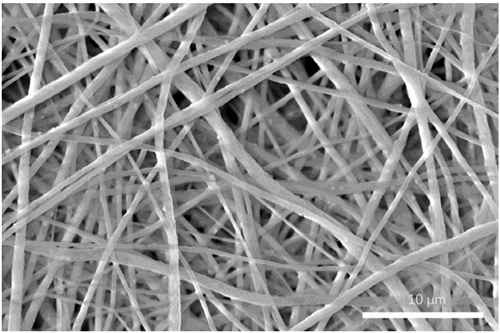Titanium Fiber Felt for PEM uses a three-dimensional mesh porous structure in order to meet its performance requirements in specific application scenarios. The combination of physical, chemical, and mechanical advantages of this structural design is a key reason why it is used in a wide range of applications, such as hydrogen production from electrolytic water, fuel cells, and filtration. The following are specific reasons why Titanium Fiber Felt for PEM was chosen for this structure:
- High porosity: improved permeability and reaction efficiency
Reason:
The high porosity (50%-70%) 3D mesh structure allows gases and liquids to pass smoothly through the Titanium Fiber Felt for PEM while providing sufficient reaction area.
Role:
In water electrolysis for hydrogen production, it can efficiently transfer hydrogen and oxygen and improve gas diffusion performance.
In filtration, it provides good permeability and reduces fluid resistance.
- Uniform pore size distribution: optimise gas diffusion and fluid uniformity
Reason:
Titanium Fiber Felt for PEM has a uniform pore size distribution (typically 30-60 μm) to ensure diffusion and flow stability.
Role:
In fuel cells, uniform pore size distribution helps gas diffusion to the electrode surface and avoids local oversaturation or flow blockage.
It improves the uniformity of the overall current density distribution of the electrolyser, thus enhancing the reaction efficiency.
- Three-dimensional mesh structure: enhance electrical conductivity and mechanical strength
Reason:
The 3D mesh structure provides multiple contact points and continuous conductive paths, balancing electrical conductivity and structural stability.
Role:
In the electrolysis of water for hydrogen production, Titanium Fiber Felt for PEM is used as an anode diffusion layer, which needs to provide a stable current conduction path and reduce the resistance loss.
Improve the compressive and tensile strength of the material to meet the mechanical demands of high-intensity operating environments.
- Large Specific Surface Area: Enhanced Reaction Rate
Reason:
The porous structure of Titanium Fiber Felt for PEM dramatically increases the specific surface area, providing more active sites for chemical reactions.
Role:
In proton exchange membrane (PEM) water electrolysis, the catalyst is attached to the surface of Titanium Fiber Felt for PEM and the three-dimensional structure accommodates more catalyst particles, significantly increasing reaction rates.
Enhanced reaction efficiency at the gas-liquid interface.

- Corrosion resistance and durability: adaptable to harsh environments
Reason:
Titanium itself has excellent corrosion resistance, and its porous structure is designed to maintain stability under high-intensity use conditions.
Role:
The three-dimensional structure resists long-term chemical corrosion in strongly acidic or alkaline environments (e.g., in electrolysis baths).
Reduces the risk of failure due to corrosion and extends service life.
- Excellent air permeability and heat dissipation properties
Reason:
The porous mesh structure allows the free flow of gases, liquids and heat, avoiding heat build-up or gas blockage.
Role:
Improve the heat dissipation performance of fuel cell and electrolyser to keep the system running stably.
Reduce the pressure drop of gas and liquid circulation and improve the energy efficiency of the system.
- Process suitability: Easy coating treatment and reprocessing.
Reason:
The three-dimensional mesh structure of Titanium Fiber Felt for PEM provides an excellent adhesion surface for coating treatments (e.g. precious metal coatings).
Role:
Enhances the activity and efficiency of electrochemical reactions.
Provides stable physical support for subsequent assembly.
Summary
The 3D mesh porous structure of Titanium Fiber Felt for PEM is not randomly designed, but has been carefully optimised to meet the following requirements:
Efficiently transfer gases and liquids.
Optimise current distribution and electrical conductivity.
Provide adequate mechanical strength and corrosion resistance.
Increase specific surface area to improve chemical reaction efficiency.
This structural uniqueness makes Titanium Fiber Felt for PEM an irreplaceable and critical material in demanding scenarios such as hydrogen production from electrolytic water, fuel cells and filtration.